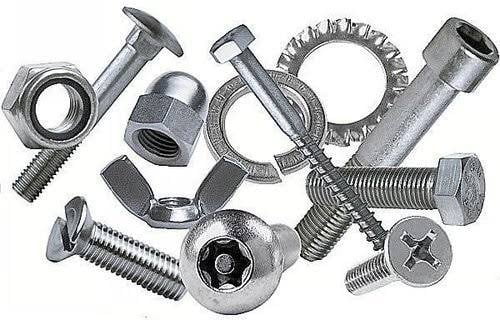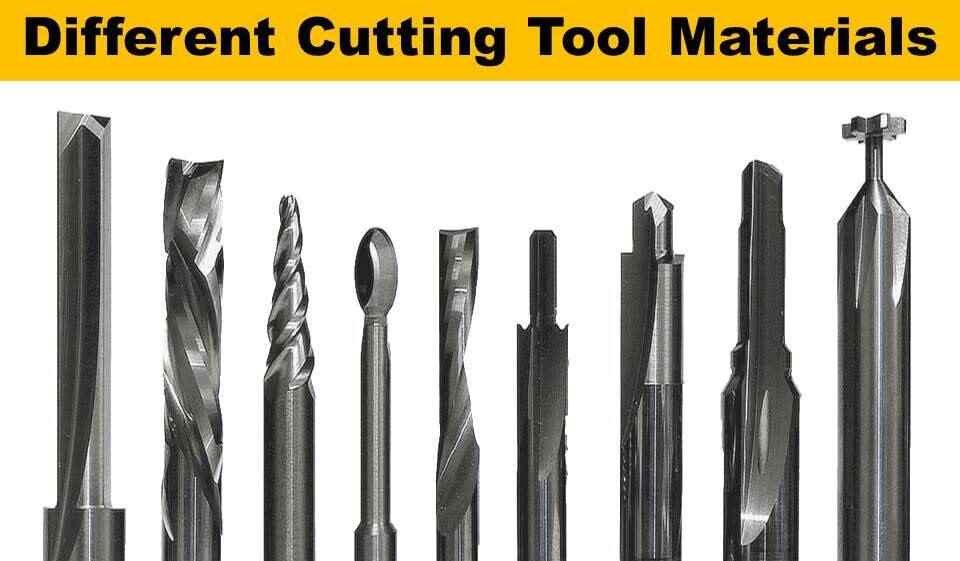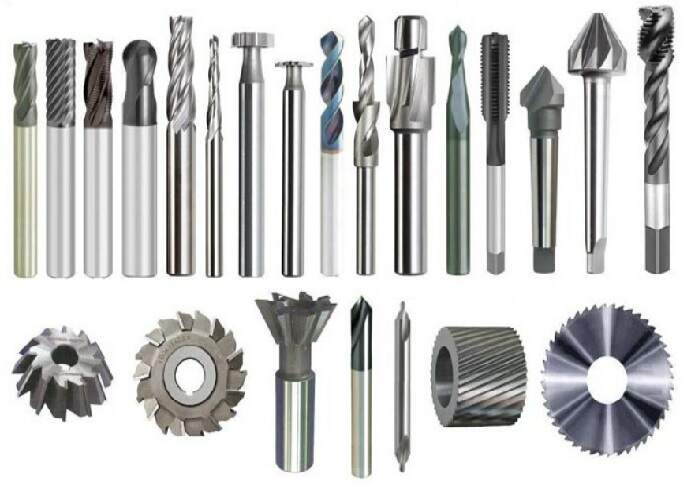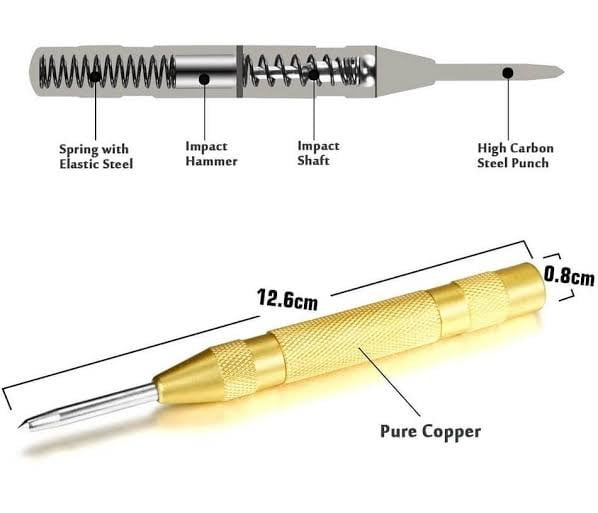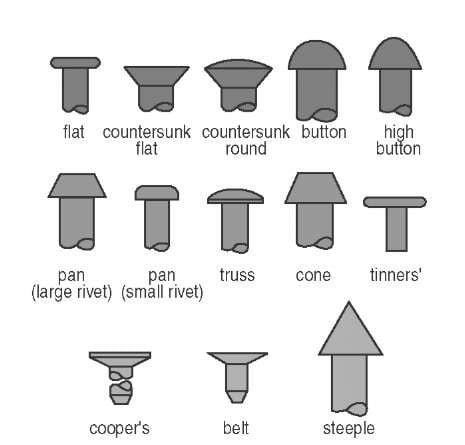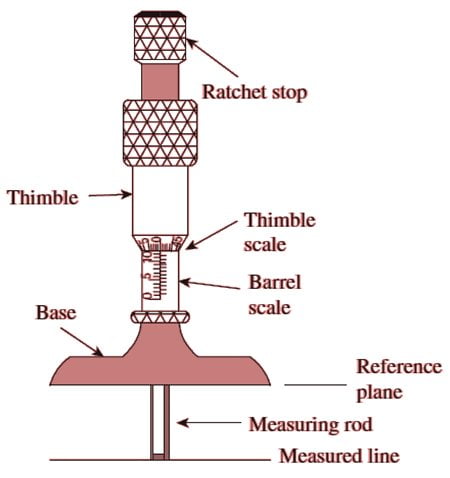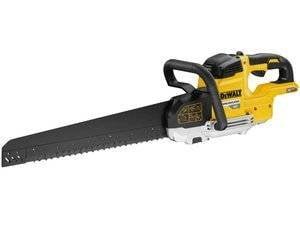Types of axes that needed to be used depends on the type of work that has to be performed. The different types of axes are mentioned in this article along with their images for better understanding.
What is an axe ?
An axe is a tool that has been used for centuries to shape, split, and cut wood, to chop wood, as a weapon, and as a ceremonial or heraldic symbol. The axe comes in a variety of shapes and sizes, but it usually has an axe head with a handle or a heel.
1. Adze Axe
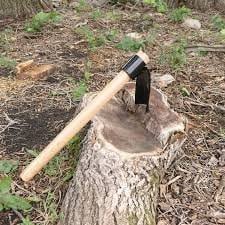
An adze is a versatile ancient cutting tool similar to an axe, but with the cutting edge perpendicular to the handle rather than parallel. They have been in use since the Stone Age. These axes are mostly used for woodworking, carving, and smoothing out wood.
The adze’s blade is fixed at right angles. It is extremely sharp for performing complex and carpentry tasks. There are many different types of adzes available today, but they are primarily divided into two categories: hand adzes and foot adzes.
A hand adze must be rotated with one hand and has a small handle for adjustment. A foot adze will be rotated with both hands and will have a long handle.
Uses :- It is used for the removeing heavy waste, leveling, shaping, or trimming the surfaces of timber.
2. Hatchet Axe

The hatchet can be used for a variety of tasks and is one of the most common types of axes used for light work. These are quite costly in terms of price. They are small in comparison to other axes, with chunky hickory wood handles.
This hatchet has a flared head with a sharp-pointed blade and is quite heavy. Balance is essential for a good hatchet because it allows for a more accurate swing and cut. It is used to cut down small trees as well as chop and split logs.
Features :-
- Hatchets are most commonly used to prepare kindling or prune trees. Felling trees and chopping firewood are also possible with a hatchet, though it will require more effort than a larger axe.
- Most hatchets have a flat hammerhead on the opposite side of the cutting edge. This is useful for driving stakes into the ground while setting up camp or chipping away at a piece of rock to make a firestarter. During the winter, the hammerhead can also be used to make a hole in the ice for ice fishing.
- In some situations, a hatchet can be used in place of a pocket knife. If you intend to hunt for food, a hatchet can be used to cut out the meat and remove any bone or cartilage.
Features :-
- Portable, small, and lightweight.
- Handles are available in wood or synthetic (fiberglass).
- The opposite side of the cutting edge has a flat hammerhead.
3. Felling Axe

A felling axe, as the name implies, is specifically designed for felling a tree.
“The felling axes are made specifically for chopping trees and cutting wood logs. The head of such an axe is somewhat heavy and will rest at the end of a long handle. With the longer handle, the user can create a more powerful swing with more leverage, resulting in better cuts.
The handle of a felling axe is typically made of hickory wood, which is much stronger than other woods. The axe blade is flared and has a sharp, thin tip. These are designed to cut across the grain of the wood. Small trees and branches are felled with these axes.”
What is used for
The felling axe, with its long, narrow blade, was used to cut down trees because it has a more elongated and rigid blade that is ideal for deep, gouging cuts.
Features
- The cutting edge is extremely sharp.
- Handles made of long wood
- Axe head that is moderately heavy.
4. Splitting Maul

The splitting maul is designed specifically for splitting large trees into small pieces of wood. They are constructed similarly to a felling axe, with a long handle to allow for a good swing.
When using a splitting maul, use a downward swing rather than a sideways swing as with a felling axe. The head of a splitting maul would be heavier than that of a felling axe.
Splitting mauls are also commonly equipped with a flat hammerhead on the opposite side of the cutting edge.
The straight handle allows the user to follow through the swing more smoothly, making it easier to drive the maul deeper into a log. Splitting maul handles, like those of felling axes, are typically quite long, ranging from 27 to 36 inches.
What it is used for
There is no better tool for heavy-duty firewood splitting than a splitting maul. The length, weight, and shape of a splitting maul’s head all work together to make this task incredibly simple.
Features
- Head is Wedge-shaped
- Axe with a very heavy head
- handle that is straight and long
- A broad butt can be used as a hammer.
5. Double-bit Axe

A double-bit types of axes are typically equipped with two blades on both sides. In the front, these blades must be symmetrical, but one will be rough and the other will be sharp. The sharp side is used to cut wood or fallen trees, while the rough side is used to split the wood into small pieces.
They are also very heavy to carry due to the double head, and are only used by lumberjacks. Some people dislike them because the extra weight of the head causes the user to tire faster than usual while using it.
What is it used for ?
Because of their versatility, double bit axes are commonly used by professional lumberjacks. Double bit axes are suitable for almost any wood-cutting job because they have the option of a sharp or blunt cutting edge. However, using a double bit axe necessitates a high level of skill.
Double bit axes are great for throwing because of the extra heft in the head. This increased power, however, comes at the expense of decreased accuracy. As a result, only a few axe throwing competitions allow the use of double bit axes.
Features
- Two cutting edges, one sharp and one dull
- Axe with a long handle (28 inches to 36 inches)
- Handle that is straight
6. Broad Axe

A broad axe is an axe with a large head. Broadaxes have two types of cutting edges, both of which are used to shape logs by hewing. A basilled edge, also known as a side axe, single bevel, or chisle-edged axe, has one side that is flat and the other side that is beveled.
A broad axe is primarily used for hewing and has a broad cutting edge with a long beard. As a result, a broad axe is also known as a “hewing axe” or “bearded axe.” The bevel on the flattened blade is typically only on one side, making a broad exclusively suitable for either left-handed or right-handed use.
A broad axe does not benefit from swing power, but rather from precise control. As a result, a broad axe usually has a short (less than 23 inch) curved handle.
What is it used for ?
The broad axe was one of the most important tools in early America. These types of axes were used to square round logs into beams for use in a variety of structures such as houses, barns, shops, and outbuildings. This is not to be confused with the felling axe.
Features
- Cutting edge is broad and single-beveled.
- Handle is short and curved.
7. Tactical Axe

The tactical axes are the modern types of axes, as is the tactical tomahawk. This axe is popular among law enforcement, soldiers, and security personnel, as well as survivalists.
Tactical axes are typically made of steel in order to be strong enough to withstand multiple tasks. These axes are primarily used for chopping, but they can also be used as a close weapon, shovel, pry bar, and hammer.
A tactical axe is a lightweight tool that can also be used as a weapon. A tactical axe does not require a large swing to deal significant damage in a close-quarters encounter. This is a good application for a tool that you will hopefully never need.
What it is used for
A tactical axe is more than just a regular axe. A tactical axe can serve as a multi-tool when you’re in the outdoors. It can be used as a hammer, prying tool, shovel, or fire starter. For cutting wood or preparing food, the standard cutting edge remains.
Features
- Used for multi-tools functions
- Construction that is both lightweight and heavy duty
- Primarily intended for survival
8. Throwing Axe

A throwing axe was a weapon used by foot soldiers and occasionally mounted soldiers from Antiquity to the Middle Ages. They are typically thrown in an overhand motion, causing the axe to rotate as it travels through the air.
One might believe that any axe can be used for throwing, but this underestimates the amount of thought that goes into designing a proper throwing axe. Throwing axes are very thin for better aerodynamics and have straight handles that can be tapered to fit any throwing hand. They also have razor-sharp cutting edges, making them easier to adhere to target boards.
What it is used for
A throwing axe can conceivably be used to cut wood, but it is best used for sport. Throwing axes are especially well-balanced and sharp, but lack the toughness of a hatchet or tactical axe. The good news is that axe-throwing establishments have grown in popularity over the last two or three years.
Features
- The profile of throwing axe is extremely thin.
- The cutting edge is extremely sharp.
- Straight wooden handle that can be customized by cutting down
- Axe head with a perfect balance
9. Viking Axe

Throughout the Viking Age, axes were used as weapons of war. The heads on Viking axes can vary in size, but they are mostly known to be heavily bearded. The axe’s heads were almost entirely made of iron, while the handles were made of wood.
Vikings were known to carry large axes that could be thrown or twisted with head-splitting force. The Mammen Axe is a good example of one of these types of axes, which is ideal for throwing and melee combat.
What it used for
Viking axes are excellent collector’s items, particularly if you are interested in ancient weaponry or historical artifacts. Because Viking axes can afford to prioritize form over function, a wide variety of axe designs are commercially available. Viking axes can also be customized to make your piece stand out from the crowd.
If you can find a Viking axe made of carbon steel with a Hickory handle, it should be perfectly adequate for delimbing a tree or chopping firewood. Expect it to be less durable than a splitting maul or hatchet.
Features
- Bearded axe head
- The cutting edge is both broad and thin.
- prominent “horns” on the head’s toe and heel
- The wooden handle is long and straight.
10. Tomahawk

These types of axes have been used in combat since their creation. These axes are similar to other axes, but they have a completely straight handle and are much lighter. This straight handle makes it simple to throw at enemies in combat.
The sharp blade makes it useful for a variety of tasks such as digging, prying, cutting, and splitting. Tomahawks are lighter and smaller than hatchets, making them easier to carry. They are adaptable and can be used for a variety of bushcraft activities.
What it used for
Tomahawks are more versatile than hatchets. They can be used for chopping, throwing, combat, and self-defense, while hatchets are ideal for cutting and chopping. Eye Shape – Hatchets have a narrow eye shape while tomahawks have a round eye shape.
Features
- A straight-edged small axe head
- The straight handle is ideal for throwing.
- Design is very compact and lightweight
11. Hudson-Bay Axe

The Hudson Bay axe is a medium-sized axe invented by Canadian fur trappers. It is an all-purpose axe that is primarily used to chop firewood during long trips to the cold north. The axe is classified as an axe or a full-sized chopping axe based on its size.
It can be used with one or both hands and is useful for small cutting and splitting tasks. It cannot be used to cut larger trees, but its size makes it more manageable for camping trips.
What is it used for
When we went on canoe trips in Minnesota’s Boundary Waters, our outfitter (Sawbill Canoe Outfitters) included a Hudson’s Bay axe in our packs. This axe was a common tool among voyageurs, trappers, hunters, and later recreational canoeists trekking into the North Woods.
Features
- It usually weighs less than 2 pound
- Its cutting edge is long
- Handle lengths ranging from 22 to 28 inches
12. Miners Axe

In the Middle Ages of Europe, miners used axes to mine copper and silver ore. A common miner’s axe with a short handle and a long head is available for you to use in tight spaces.
The miner’s axe, with its tapered cutting edge, has evolved from a niche tool to a more general-purpose tool.
What it is used for
This axe was originally used by miners in Europe during the Middle Ages while mining for copper and silver ore. These axes have a short handle and a long head, making them ideal for close quarters use.
Features
- Axe with a Dayton-style head
- Handle made of short wood (20 inches or less)
13. Pick Axe

A pickaxe, pick-axe, or pick is a T-shaped hand tool that is used for garden and landscape. Its head is usually made of metal and is attached perpendicularly to a longer handle, which is traditionally made of wood, occasionally metal, and increasingly fiberglass.
It has an axe head with two sides, one with a flat chisel-like edge and the other with a pointed pick. The larger axe head also gives you more power when swinging. Pick axes are available in a variety of lengths and sizes, and can be used one-handed or two-handed.
What it is used for
A pickaxe is a large tool made up of a curved, pointed piece of metal with a long handle attached in the middle. Pickaxes are used to break up rocks or to break up the ground.
Features
- A large axe head with a chisel edge and a pointed pick.
- Handle that is straight
- Handles can be long or short and made of wood or fiberglass.
14. Dayton Axe

The Dayton Axe is a very classic. It is Easily identified from other types of axes by its bright red axe head.
Dayton pattern axe heads are named after the city of Dayton in Ohio. These are full-sized felling axes that were (and possibly still are) used to fell hardwood trees from which to build a house. Unlike Hudson Bay axe heads, which weigh 2 pounds, Dayton axe heads typically weigh between 3.5 and 5 pounds.
What is it used for
The Dayton Axe, with its heavy axe head and sharp cutting edge, is ideal for cutting across the wood grain. If you’re working with knot-free wood, it can also be a good splitting axe.
Features
- Axe head with lacquer treatment
- Blade is curved with a gentle flare and a sharp edge.
- Handle made of hickory (around 36 inches)
15. Carpenter Axe
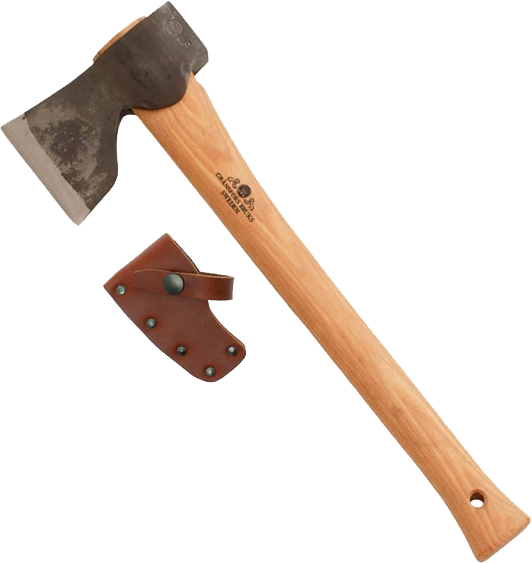
The carpenter’s axe, as the name suggests, is a tool designed for precise woodworking.
Carpenter’s axes, also known as Carpenter’s hatchets, are small axes that are slightly larger than hatchets and are used in traditional woodwork, joinery, and log-building. They have pronounced beards and finger notches for a “choked” grip that allows for precise control.
A carpenter axe is intended for fine woodworking and is quite uncomfortable for chopping or cutting. It is a craftsman tool that comes in small sizes. Although it is slightly larger than a standard axe, it is also known as a carpenter’s hatchet.
These types of axes typically consists of a straight-edged sharp blade with a flat butt that doubles as a hammer. When deciding which axe to use, the blade is critical. Using a straight edge blade will provide you with a better and more accurate cut. The modern carpenter’s axe also has a groove that is thought to be useful for removing nails from wood.
What is it used for
The carpenter’s axe is specifically designed for fine woodworking. It’s not ideal for felling a tree or chopping firewood, but it’s useful for more precise and detailed cutting work. If you’re going to make furniture out of raw wood, you’ll need a carpenter’s axe.
Features
- Size: Small (slightly larger than a hatchet but smaller than a felling axe)
- Axe head with a very sharp cutting edge that is lightweight.
- flat butt for hammering
- For a better grip, the handle has been notch.
- It may come with A nail removal tool.
16. Fireman’s Axe

A fireman’s axe is a type of axe used by firefighters in an emergency to break doors and windows. A fireman’s axe is also known as a pick head axe, a fire axe, or a firefighter’s axe.
This type of axe has a sharp, almost pick-shaped tip in addition to the traditional sharp-edged blade. Because it is easily identified during an emergency, the fireman’s axe is frequently decorated in bright colors.
What is it used for
The pick head axe’s cutting edge and pointed pick combination make it an ideal tool for breaking windows, doors, floorboards, ceilings, and padlocks. This is a critical tool for firefighters responding to urban emergencies.
Features
- A cutting-edged double-bit axe head with a pointed pick
- A long handle (28 to 36 inches) made of wood or fiberglass
- For easy identification, the axe head is painted red.
17. Ice Axe

An Ice axe is a multi-purpose hiking and climbing tool which is used by mountaineers for both ascent and descent of routes involving snow, ice, or frozen conditions.
An ice axe is a specialized tool used for ice climbing and technical mountaineering in snowy terrain. It has a pointed blade with a jagged edge as its main “cutting edge.” This is designed to be driven on the ground or ice, where the jags dig in to prevent slippage.
Ice axes are almost always equipped with a stainless steel or aluminum handle for durability, a non-slip grip, and a rope for storage. To make the tool more versatile, the opposite side of the pointed pick can be equipped with a small hammer or an adze.
What it is used for
For many, the ice axe is a mountaineering symbol that conjures up images of rugged glaciated peaks and above-the-cloud summits. It’s a must-have safety tool for mountaineering adventures, whether you use it to keep your balance or to self-arrest and prevent a fall.
Ice axes are a vey essential items when hiking on ice or in any type of slippery terrain. Its primary function is to allow hikers to strike into the ground or ice and use it as a point of leverage.
It can also be used to strike or hammer the ice, as well as to make holes for ice fishing.
Features
- Pointed Pick with a jagged edge.
- Body made of stainless steel or aluminum
- It includes a rope tether.
- To increase versatility, a hammer or adze end can be added.
18. Halberd Axe

A halberd is a two-handed pole weapon that gained popularity in the 14th, 15th, and 16th centuries. The word halberd is most likely equivalent to the German word Hellebard, which derives from the Middle High German words halm and barte joined to form helmbarte. Halberdiers were soldiers who used the weapon.
What it is used for
Fortunately, we no longer fight each other with spears and axes. Halberds are now mostly used for display and exhibition purposes. As a result, they don’t need to be sharp or even functional – they just need to look good.
The Papal Swiss Guard in the Vatican is one of the few people who still “wield” halberds. These halberds, however, are only for show. Any Swiss guard on duty is most likely armed with more practical weapons.
Features
- A large axe head with a curved cutting edge and a pointed spearhead.
- A very long handle (up to 41 inches) that can be used two-handedly.
- Usually contains a lot of visual elements
19. Crash Axe

A crash axe is a life-saving tool. These axes are used in the event of a plane crash. This axe has a short handle and a razor-sharp smooth or serrated blade.
If other exits are blocked, the blade must be able to cut through sheet metal to gain access to the aircraft from the outside or cut holes in the aircraft from the inside to exit. A crash axe can also be used to cut interior walls and upper cabinets, as well as open gaps.
What it is used for
The Paratech Crash Axe is designed for prying and twisting, metal cutting and chopping, and forcing open doors and windows. The blade of the Crash Axe is used for chopping, busting, prying, and hinge pin removal.
Features
- Usually hatchet-sized
- Made of lightweight but long-lasting materials such as titanium or stainless steel
- Typically, they have a rubber or fiberglass handle.
- It is possible to have a variety of tools and functions.
20. Executoner’s Axe

Because we no longer perform beheadings, an Executioner’s Axe is merely a prop or display piece. An Executioner’s Axe is distinguished by a large axe head and can be single bit or double bit. One thing is certain: an Executioner’s Axe is terrifying not only because of its appearance, but also because of the fate of the unfortunate person who comes into contact with it.
What it used for
An Executioner’s Axe, as the name suggests, was used to carry out public decapitations as a form of capital punishment. The use of cartoonishly large Executioner’s Axes has become a trope in Medieval period pieces. This is also a popular piece in reenactments and private collections.
Features
- large, intimidating axe head that can be single or double bit.
- Although depictions may differ, a long wooden handle is typically used.
21. Mattock Axe

A Mattock, which is frequently misidentified as a pickaxe, is a double-bit tool that combines an adze with either a pointed pick or a standard axe cutting edge. This increases the weight of a Mattock’s axe head, giving it more momentum and swinging power.
A Mattock may be suitable for general-purpose digging and chopping depending on the specific tool included. To take advantage of the heavy axe head, it is usually a two-handed tool. There are, however, one-handed Mattocks with shorter handles available.
What it is used for
Mattocks are primarily used for gardening and other yard work. Mattocks, a more versatile version of the adze or pickaxe, can be used to cut through roots, whittle large rocks, or break through topsoil.
Features
- A double-bit axe head that has a broad adze on one side and either a pointed pick or a sharp axe edge on the other.
- Handles can be made of Hickory or fiberglass and can be short or long.
22. Roofing Axe

The roofing axe is a traditional and modern type of axe used for roofing. It is also well-known for the roofing hatchet.
The roofing axe is made up of two heads, one on each side of the handle. One head has a pointed blade for cutting roof shingles. The second head of a hammer used for pounding roofing nails when attaching shingles to the roof.
What it is used for
A Roofing Axe is a great tool for cutting and installing shingles, but it isn’t useful for much else. A Roofing Axe is a small but heavy tool that makes hammering nails and cutting up shingles much easier and faster.
Features
- A specialized cutting head with a sharp axe edge and a hammerhead that is magnetized
- A shingle gauge for a more even setting of shingles
- A one-handed tool with a short handle made of Hickory or fiberglass.
- Typically includes a hand loop for added safety when working at heights.
23. Forest Axe

The Forest Axe is an all-purpose heavy-duty cutting tool designed for the harshest outdoor conditions. It is typically made of the toughest materials available, such as a carbon steel axe head and a Hickory handle. A Forest Axe, with its very-sharp cutting edge and powerful swing, is ideal for felling trees, cutting up tree limbs, and chopping firewood.
Forest axes vary greatly in size from brand to brand, but they are typically shorter than a felling axe but much larger than a hatchet. While there is no standard for the appearance of a Forest Axe, excellent craftsmanship appears to be one of its essential components.
What it is used for
Forest axes are strong axes that are only used to fell trees. They are extremely heavy-duty tools that would be too cumbersome to transport on camping trips, but they would be ideal for storing permanently in a cabin in the woods. These axes have extra-long handles and are designed to fell large trees.
Features
- Excellent craftsmanship, high-quality materials, and a sturdy construction.
- A Forest Axe provides superior cutting performance in a small package.
24. Battle Axe

A battle axe is a battle axe that is specifically designed for combat. Battle axes were more powerful versions of utility axes. Many were small enough to be used with one hand, while others were larger and required two hands to operate.
While most of us have seen battle axes in movies or television shows, you are unlikely to see a genuine battle axe outside of a museum. Battle axes were high-powered weapons in medieval times. They lack the finesse and reach of a sword, but they can inflict significant damage. Real battle axes were heavy and cumbersome, designed to withstand the harsh punishment of battle.
Real battle axes came in a wide range of sizes and shapes. They can have a single bit, a double bit, a pointed pick, or any combination of the three. These battle axes may have also served a ceremonial purpose and may have been intricately gilded.
What it is used for
Battle axes, which were used as weapons in ancient times, can now only be seen in museums or in works of fiction. Battle axes can be found in almost any form of popular media, from books to TV shows, movies, and video games.
Features
Because battle axes are mostly used in fiction nowadays, there is no standard shape that they must take. Battle axes are typically depicted as having two curved sharp edges. They are mostly used as heavy, two-handed, slow but powerful weapons.
25. Mattock Axe

These types of axes are also known as cutter mattocks. A grub axe has an axe on one side and an adze on the other. The blades of this axe will be at a vertical angle, while the adze blade, which is the longer of the two, will be at a horizontal angle.
It’s ideal for scrubbing in compacted soil and rough terrain. These tools are useful in the garden because they can dig holes to establish new plants or break-resistant roots of older plants.
A mattock /mtk/ is a hand tool that can be used for digging, prying, and chopping. It has a long handle and a stout head, similar to the pickaxe, and combines either a vertical axe blade and a horizontal adze (cutter mattock) or a pick and an adze (pick mattock). In North America, it is also referred to as a “grub.”
What it is used for
The term “grub axe” which comes from the way this tool is used, as it is ideal for grubbing in compacted soils and rough terrain. These tools are very useful in the garden because they can dig holes for new plants or break up resistant roots of old plants.
26. Hunters Axe

As the name implies, this type of axe is commonly used by hunters because it can chop both wood and meat. A traditional hunter’s axe has a grooved handle that improves grip even when the user’s hand is wet or sticky.
A simple axe will not work well for an animal’s hide because a straightedge with sharp corners will cause the animal’s skin to be damaged. These axes are easy to find, but you’ll need to find an expert counterfeiter to buy one.
This was all about 26 different types of axes, their descriptions, features and uses. Hope you liked this article. Read some other related articles from below given Links.
Check Out Other Important Topics


